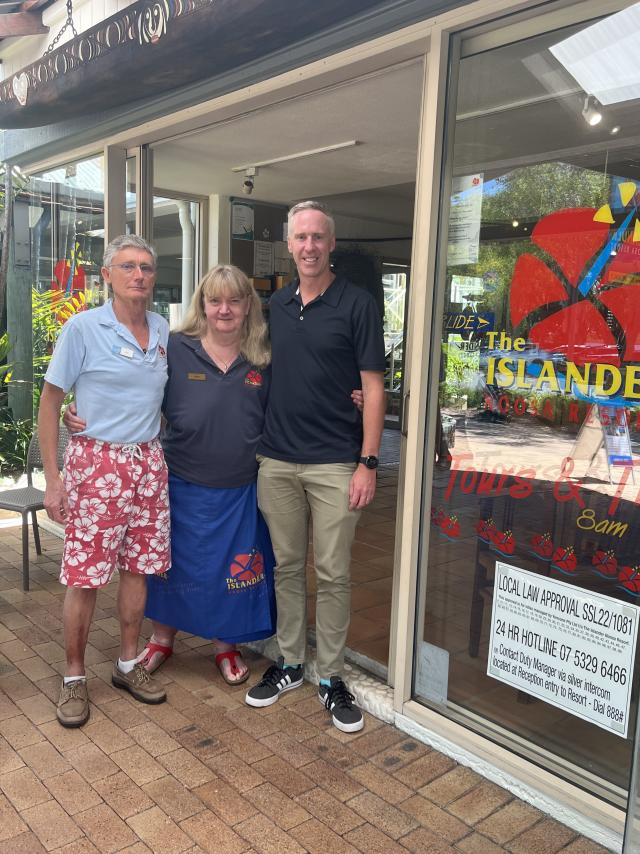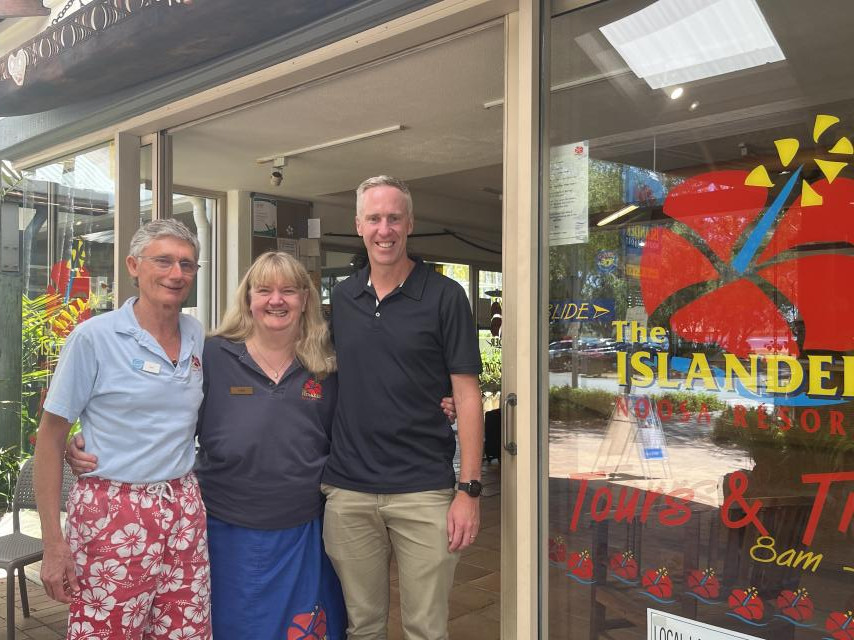The idea was simple enough.
Faced with a Covid-induced growth bubble in short term accommodation offerings in residential areas and a rapid increase in “party houses” for rent in elite neighbourhoods like Noosa Sound and Noosa Waters, in 2021 Noosa Council took the first of a series of measures designed to control and restrict the spread of offerings on platforms like Airbnb and Stayz to prevent new and part-time accommodation providers getting a free ride on services and infrastructure that established tourist accommodations had to pay for, and to control tourism’s growing impact on resident amenity.
The first of these blunt instruments was rates. On 30 July 2021 in this space I wrote: “Whatever outcomes Noosa Council intended with its new rates structure for short term rental accommodations, huge numbers of ordinary residents who worked to fund their retirements by investing in holiday apartments are apparently just collateral damage. I know because I am one of them. Last week’s half-yearly rate notice for our holiday-let apartment revealed a 47 per cent ($433) increase over the same period last year. The Tourism and Economic Levy of $51 last year has gone, but in moving our property from Category 23 to Category 26 (whatever that means), the general rate increased by almost 70 per cent, from $686 to $1159.
“As I understand it, council was trying to target people who were short-term letting houses and apartments in residential areas without contributing to the tourism-driven economy. So how does that include the many thousands of property owners, like me, who bought into purpose-built tourist accommodation complexes years ago with the intention of self-funding their retirements?”
Two years later I have still had no adequate answer to my questions, but the next blunt instrument to be unveiled had onsite resort managers reeling at the stupidity and unfairness of the vast net thrown over the biggest sector of tourism accommodation providers, biting the hand that feeds almost half our total tourism accommodation requirements and has been a vital part of the cultural DNA of Noosa since significant tourism began after World War II.
The strata-titled resort complex offered ordinary Australians the affordable opportunity to buy into the Noosa dream, to secure their annual holiday at the beach while putting aside some savings from rental income the rest of the year. From humble “six-pack” beginnings, these complexes have grown to encompass high end beachfront and beachside resorts in the Hastings Street precinct and Little Cove, as well as on Noosa Hill, Sunshine Beach and along Gympie Terrace and in Noosaville’s network of riverside streets.
They represent the backbone of Noosa’s short term accommodation, providing purpose-built tourism facilities in desirable locations, rather than spare rooms in residential precincts, but many of them have been lumped together with Airbnbs and the like under the one-size-fits-almost-all net that Noosa Council has imposed through its Short Stay Letting Local Law, which imposes registration fees on every accommodation unit owner outside an exempt precinct (and we’ll get back to that) to pay for a range of services, such as regular security patrols and security call-outs, which are already provided in managed resorts under caretaking agreements. While the fees (starting at $200) are relatively modest, they come on the back of rates increases that now see the owner of a holiday-let unit in a purpose-built resort paying 100 per cent more than a residential owner and 67 per cent more than an owner who permanently lets.
According to a group of key resort managers Noosa Today spoke to last week, owners remain hopping mad and are letting council know on a daily basis, and they are being joined by an increasing number of residents who support the principle of “resorts for tourists, residential for residents”. Cathy Parry-Moule and Rod McLennan from The Islander Noosa Resort on Gympie Terrace, who have been at the forefront of the fight for fairness for managed resorts, say that current and former councillors and council staff who have to implement the complex registration process have also admitted that the inclusion of resorts was a mistake that should be rectified.
Said Rod: “When we met with Mayor Stewart over a year ago she said council had their legal people working on a way to get resorts out of the levy.”
Cathy: “She added that she was really sorry about the situation, that it should never have happened and was an error that she would fix. [Former mayor who first pushed for controls on STAs] Tony Wellington told us in an email that he never intended purpose-built resorts to be part of it.”
But no one seems to be listening now. A long letter outlining the argument for exemption of managed resorts sent to acting chief executive officer of Noosa Council Larry Sengstock back in August remains unanswered, despite advice from the state that a dialogue with the CEO was vital before presenting the case to the state ombudsman.
Ryan Rae, onsite manager for Culgoa Beach Resort, Noosa Hill Resort. Noosa Blue and Noosa Lakes, who has also played a key role, believes the registration fee is a blatant money grab.
He told Noosa Today: “Based on the information that the council has put out, there are 5200 STA properties they’ve thrown the net over, if they’re registered. The minimum renewal fee is $200 so if you apply that to all it’s over $1 million revenue. Resort STA apartments are 47 per cent or 2444 units, with dwelling houses next biggest at 16 per cent, or 832… It comes down to the fact that 86 per cent of STA resort unit owners don’t live in Noosa Shire and don’t vote, so it’s easy pickings.
“They also say that over a 12-month period they have had more than 600 complaints made to the STA hotline. We don’t know how many of those relate to managed resorts and how many to STA accommodations in residential zones. It would be very simple to break that down but they don’t seem to want to. We’ve tried to resolve this through negotiations with council staff but there seems to be a distinct lack of understanding of the role that resort managers play. We’re employed by the body corporate under a set of laws governing the strata title which include, among other things, a noise provision bylaw, and it’s our responsibility to enforce those bylaws regardless of whether the unit is in the letting pool or not. All of the resorts that I run have operated for 20 years or more without this new layer of governance, so there’s no rationale for the change.”
So why is exemption of resorts so hard? After all, there is already a precedent in the Hastings Street precinct, which was exempt from the get-go, allegedly after pressure from business interests.
Ryan: “Initially I was told it was because you can’t live in resorts there, which is incorrect. Resorts there are set up in the same way as every other resort in Noosa, with developers selling them as multi-use because they are easier to sell and to finance. If a unit is restricted to holiday or short term letting, the banks will finance less than for multi-use, so the end result is that around 90 per cent of strata title in Queensland is multi-use. So the optics are that they didn’t want to take on the deep pockets of Hastings Street.”
Cathy: “It’s not difficult. When they look at our case for exemption all they have to do is look at their own criteria for the [SSL] bylaws and look at the agreements that we operate under. They’re both the same. We already do what they want us to pay them to do. Another interesting thing about a resort is that all the people who live there or stay there are treated equally. We are bound by our caretaking agreement to treat them equally. A lot of the residents around here get that and feel the same as us. In fact, some of them have suggested a protest rally down Gympie Terrace!”
While there has been some talk of council conducting an internal review of the situation, the managers understand that it won’t involve them, other than sending a submission. They also say that while the last thing they want to do is seek legal redress, that option may soon be back on the table.
Meanwhile, at a time of community consultation on Noosa’s proposed Destination Management Plan, it seems no one wants to address a clear-cut case of destination mismanagement, with properly-managed tourist resorts being penalised for doing the job they were built for.
DISCLOSURE: The author is the owner of a holiday-let investment property within a local managed resort.








